- Official name: Samnite House / Casa Samnitica
- Location: Herculaneum, Naples, Italy
- Date of construction: Possibly 2nd century BCE
- Architectural style: Pre-Roman
- Notable features: Incrusted atrium, *fauces, *mosaic flooring
The Samnite House in Herculaneum is one of the oldest houses found among the ruins. Experts believe that it stood tall even about 300 years before Vesuvius’ eruption. With its fine atrium, decorative friezes and stuccoed walls, it is believed to belong to an aristocratic family of pre-Roman times, hence the name ‘Samnite House’.
However, the house’s peristyle was eventually removed from the main property and another residence was built in its place. What remains of the preserved Samnite House today is just the atrium and a few rooms. Read on to know what you can see and admire inside this ancient house.
The Samnite House is an example of a domus, or a residence that was favored by early Romans belonging to the aristocratic classes. Domuses *typically followed a set construction style including the *fauces, atrium, compluvium, impluvium, cubicula and triclinia, the details of which are explained below.
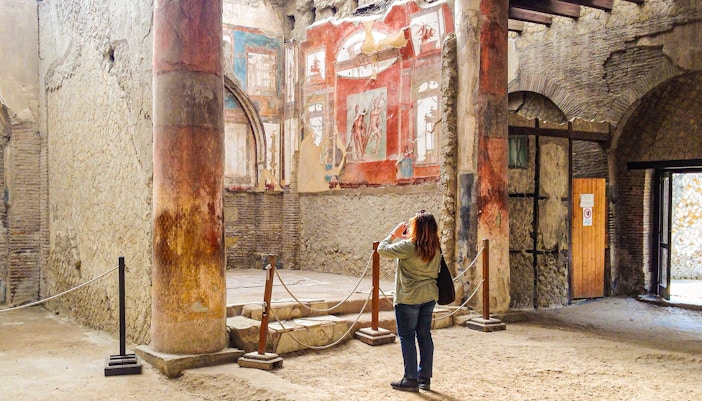
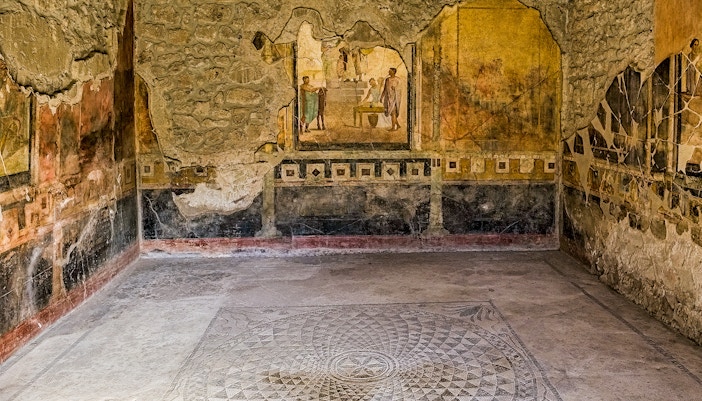
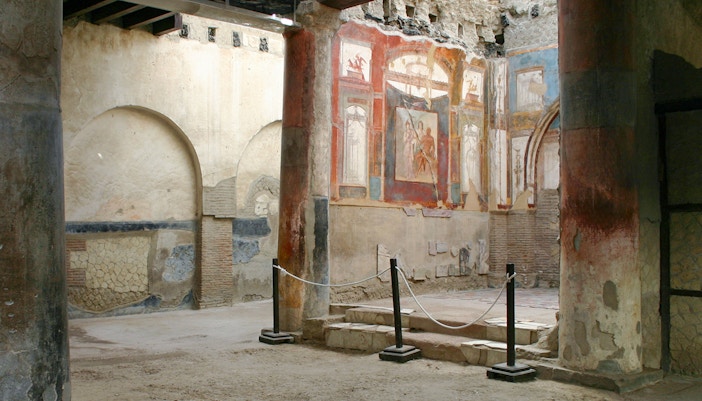
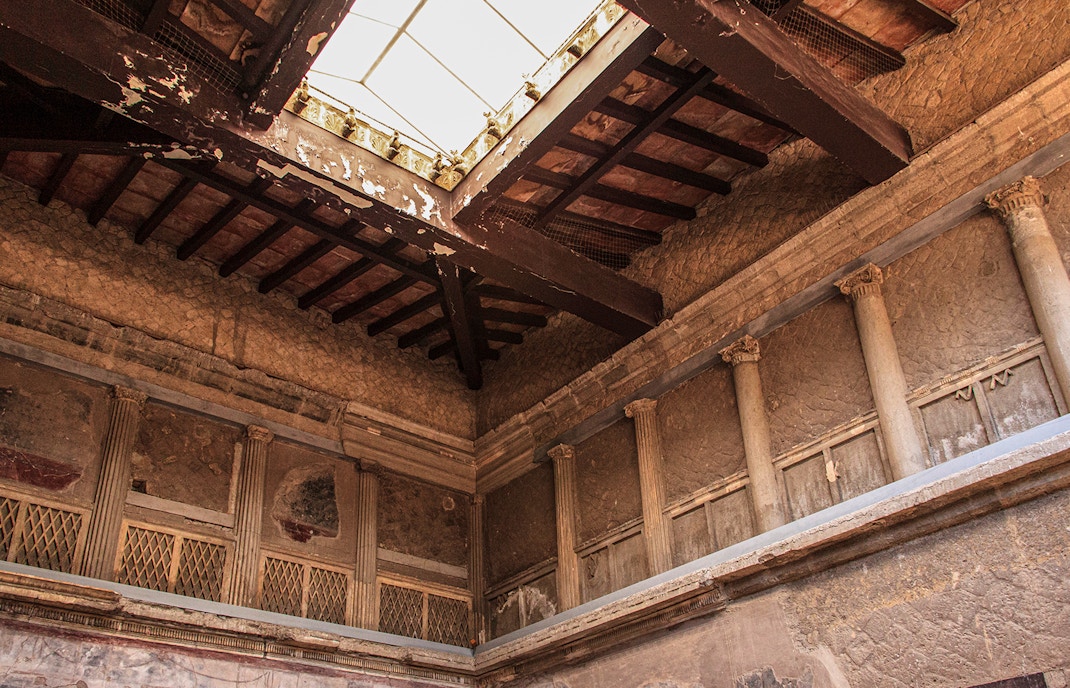
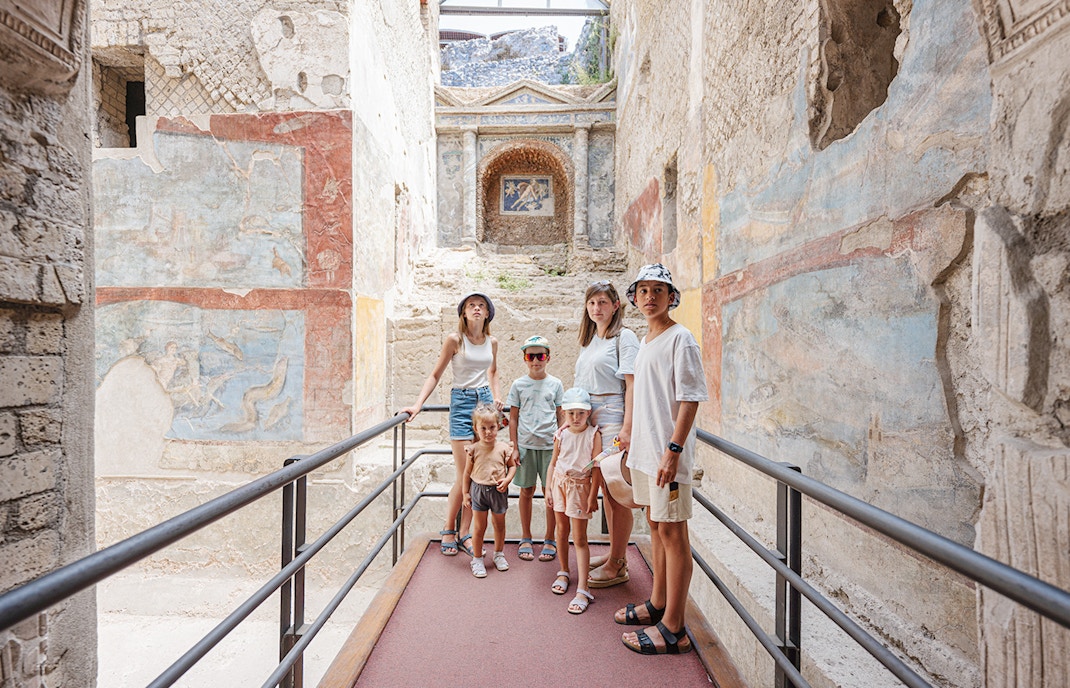
The Samnite House in Herculaneum traces its origins to before the arrival of the Romans, as evidenced by a preference for faux-marble walls. Likely constructed during the 2nd to 1st centuries BC. Named after the Samnites, an ancient Italic people who occupied Herculaneum in the 5th and 6th century BC, the house reflects the historical and cultural context of the time.
Like every other structure in Herculaneum, the Samnite House too was unspared from wrath of Vesuvius in 79 AD. The volcanic ash and pyroclastic flows enveloped the city in layers of protective material.
Rediscovered in the 18th century during systematic excavations, the Samnite House emerged from centuries of obscurity. Starting from Maiuri's column restoration in the atrium, the efforts of archaeologists in preserving this ancient house are ongoing.
Samnite House is a draw for tourists and history scholars alike. Its age, combined with its well-preserved spaces and captivating frescoes make it a must-visit spot.
Herculaneum Skip-the-Line Tickets
Herculaneum Skip-the-Line Guided Tour with an Archaeologist
Herculaneum Skip-the-Line Tickets with Official Audio Guide
Combo (Save 5%): Pompeii + Herculaneum Tickets
The Samnite House is one of the popular ruins in Herculaneum as it is considered to be one of the oldest dwellings there, dating back to the 2nd century BCE. It was at least 300 years old already when Mount Vesuvius erupted.
The Samnites, hailing from the mountainous regions of central and southern Italy, notably engaged in the Samnite Wars against Rome in the 4th and 3rd centuries BC. Recognized for their formidable military tactics, the Samnites influenced political dynamics in pre-Roman Italy.
Yes, your Herculaneum tickets include access to the Samnite House. You don't have to purchase tickets separately.
The connection between Herculaneum and Vesuvius date back to the eruption of Vesuvius in 79 AD, the rapid accumulation of volcanic ash enveloped and solidified around the Samnite House, ensuring remarkable conservation.
Visitors today can walk past the fauces (a passageway leading to the atrium) and enter the atrium. They can also see the mosaics on the tablinum (another space connecting the house to the peristyle or open courtyard). The peristyle, however, no longer exists. Other remains found include a statuette of Venus and dog-shaped table legs.












